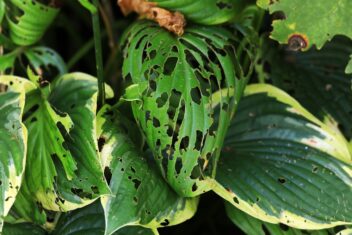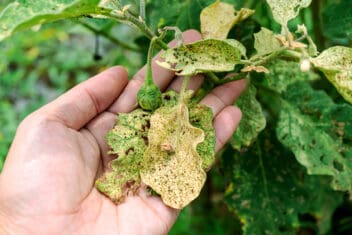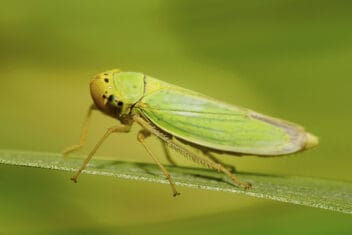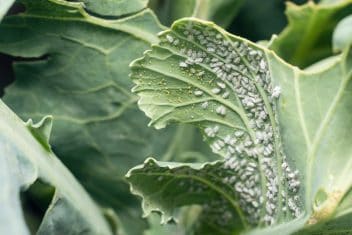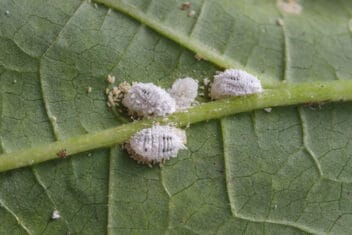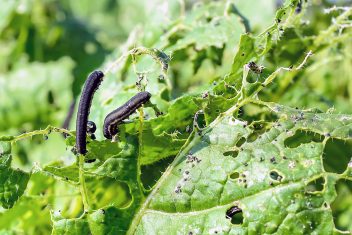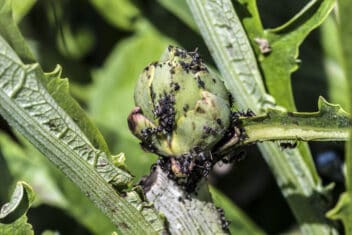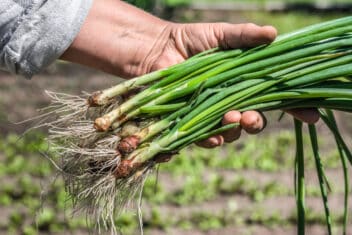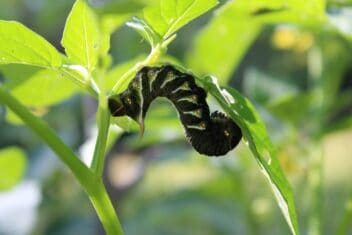Most people think that pests only infest outdoor plants, but that assumption is wrong. Many houseplant pests exist and they will probably find your plants at some point.
It’s easiest to manage an infestation if you catch it early on, which is why you need to know the signs of a problem brewing and what to do if your plants end up with one of these damaging pests.
Plus, we’ll help you avoid becoming infested in the first place. Ready to learn more?
10 Common Houseplant Pests
Dealing with houseplant pests is never a fun problem, but the good thing is that you can easily control most of these pests with a few good growing techniques or insecticides.
1. Aphids
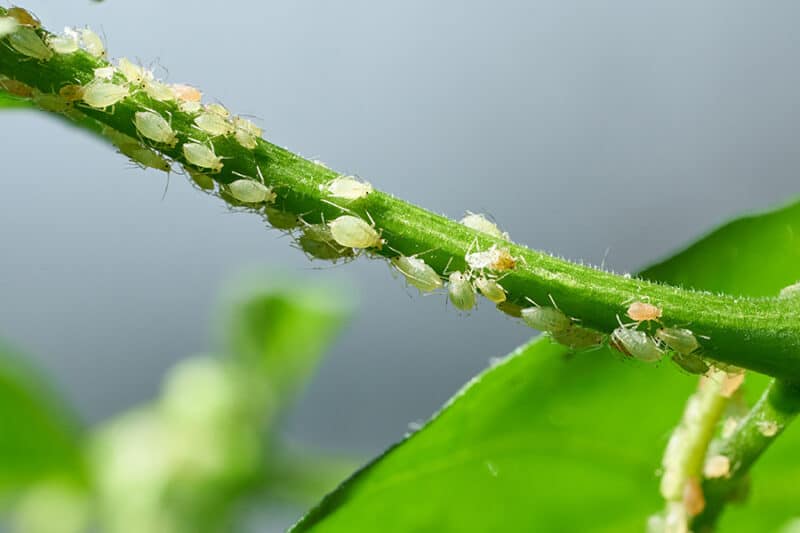
Aphids seem to infect almost every plant out there, and houseplants are no exception.
These pests are small, soft-bodied insects that can be white, brown, black, orange, yellow, green, or pink. That makes it a bit hard to identify them. These pests prefer to eat new growth and feed on soft stems, branches, and leaves.
One of the worse parts of aphids is that they like to suck out the sap from your plants, leaving behind a sticky residue called honeydew that attracts ants and sooty mold.
Take a look at our guide to dealing with aphids on plants to learn how to identify and eliminate them.
2. Common Brown Scale

Different varieties of scales exist in the pest world, but one that visits houseplants the most often is soft brown scale (Coccus hesperidum). They’re a bit hard to spot because they’re so small; they only measure 3-4 mm long. Also, despite their name, they aren’t always brown; they can also be yellow, amber, or olive.
Common brown scales are called this because they have a scale-like appearance with a wax covering. They like to clump along the stems, sucking out the plant’s juices. They almost appear to be a growth on the plant rather than an insect.
One of the problems with common brown scales is the warm temperatures indoors allow them to keep reproducing year-round. So, it’s easy to end up with a massive population that will keep spreading throughout all of your houseplants.
The good thing is that these pests are only mobile when they’re young, so some houseplant lovers like to simply discard the infested plants to get rid of these pests.
As with aphids, these bugs secrete honeydew which attracts sooty mold, so you need to address an infestation.
To control them, take your plant somewhere shady outdoors if the weather isn’t too hot or cold. These pests have lots of natural predators outdoors. Then, spray with an insecticidal soap made for houseplants.
3. Fungus Gnats

Fungus gnats (Orfelia and Bradysia species) are super annoying, but they aren’t too problematic for houseplants. They typically appear when you overwater your plants because the fungus gnats breed in damp soil. They feed on the roots of the plants, but they don’t usually kill them.
They look like teen tiny mosquitos, though they don’t bite. While they don’t fly far, they will buzz around the plant if you disturb the soil (when you water, for instance).
If you want to get rid of fungus gnats, make sure you allow the soil to dry out completely between watering and avoid overwatering. Sticky fly traps are effective, or make a solution with one part hydrogen peroxide to four parts water and spray the plants and soil.
4. Leafminers
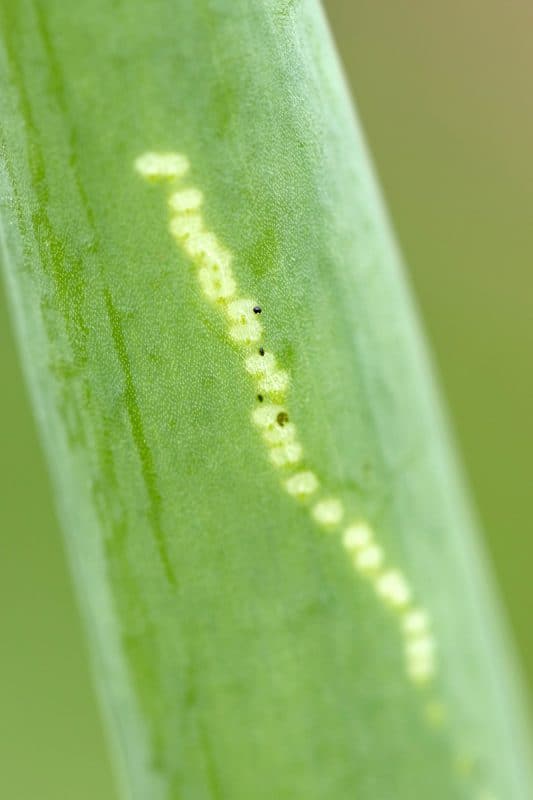
Leafminers are the larvae of several different insects like moths, flies, beetles, and sawflies. What they have in common is that the larvae feed on the leaf tissues of plants by chewing tunnels throughout. If you notice winding, discolored trails, or blotches within the leaves, you might have leafminers.
The good thing is that leafminers rarely cause serious damage, but you shouldn’t leave them on your plants. Remove leaves that have leafminer damage. Insecticidal sprays containing spinosad work well at controlling these pests, but make sure that the spray is approved for indoor use.
5. Mealybugs
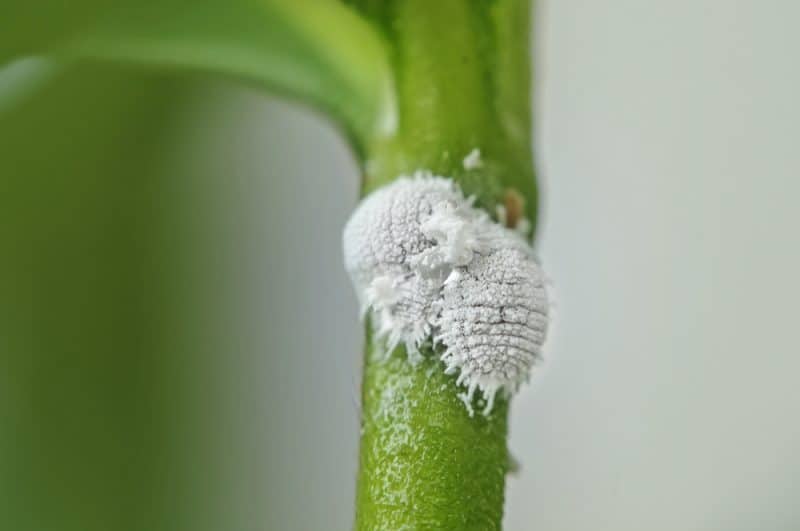
Sometimes, people assume that their plants are dusty when they really have mealybugs. These are oval-shaped, soft-bodied insects that look like white dry lint pieces. They like to live in colonies on the underside of the leaves and in the small nooks between the leaves and stems.
One of the biggest problems with mealybugs is that they suck out the juices from your plants.
Dealing with mealybugs is hard because they spread quickly. Neem oil often takes care of their population, but you might have to spray more than once to eliminate all the pests. You can also put rubbing alcohol on a cotton swab and swipe it on the bugs to kill them.
6. Root Ball Pests
If you take your houseplants outside in the summer, their root balls might end up infested with pillbugs, millipedes, and slugs. These pests feed on the root systems, which can cause serious issues since the roots are responsible for the uptake of nutrients and water to your plant.
If you suspect that your plants have root ball pests, take the plant out of the container and go through the roots to gently remove them by hand. Sometimes, these pests lead to ant infestations in the potting soil; ant colonies can be killed by soil drenching with products that contain permethrin.
You can also just rinse the soil away and repot in fresh soil.
Finally, if those steps don’t work, pour an insecticide soil treatment through the soil in the container.
7. Spider Mites
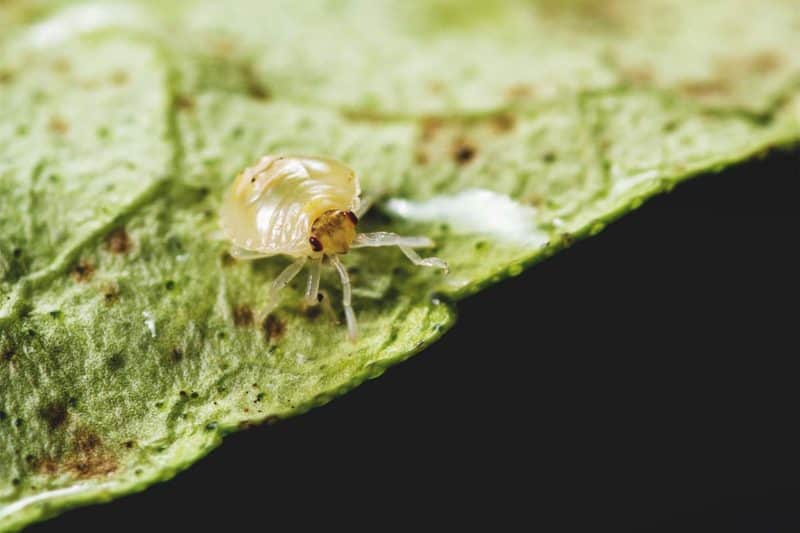
Spider mites are not fun to have and are distressingly common. Unfortunately, these pests go unnoticed too often because they’re super small, and people assume the webs they see are from spiders rather than spider mites.
Spider mites spin small webs all over your plants and lay tiny eggs in the webs and on the soil. If you inspect the plants closely, you’ll see what looks like little dust on the spider web; those are mites.
These pests feed on the underside of plant leaves, and they thrive in hot, dry conditions. For instance, you’re more likely to see them in a plant near a heating duct than one near a cool window. Typically, the first sign of a spider mite infestation is plant damage like light-color speckling on the surface of leaves.
Neem oil or insecticidal soaps are awesome options for treating spider mites, but you might need to apply several times to get the infestation under control.
8. Springtails

These pests (suborder Collembola) aren’t as common as some others, but they’re one pest you should know. Springtails are tiny, wingless insects that measure around 1/5 inch long in various colors that live in the soil. Despite being wingless, they jump from place to place.
If you end up with springtails on your houseplants, it typically means that you are overwatering them. They like to feed on decaying organic matter, and they’ll eat through the stems of your houseplants, but the damage is often minimal unless they attack in large numbers.
To get rid of them, try letting the soil dry out thoroughly before watering again.
9. Thrips
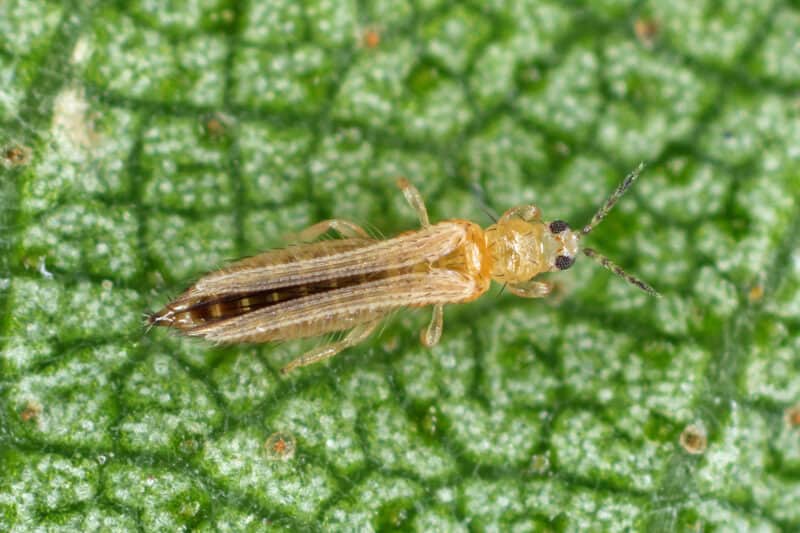
Another one of the most common houseplant pests is thrips (order Thysanoptera), sometimes called thunderflies. Thrips are small, slender, bugs that cause serious damage to your plants.
A thrips infestation starts with faded or blotchy leaves, and you might notice these pests crawling and flying around your plants. They suck the sap out of the leaves, stems, flowers, and buds, leaving behind droplets of excrement that look like black specks.
If you think you have a thrips infestation, look at our guide on dealing with thrips in the garden.
10. Whiteflies
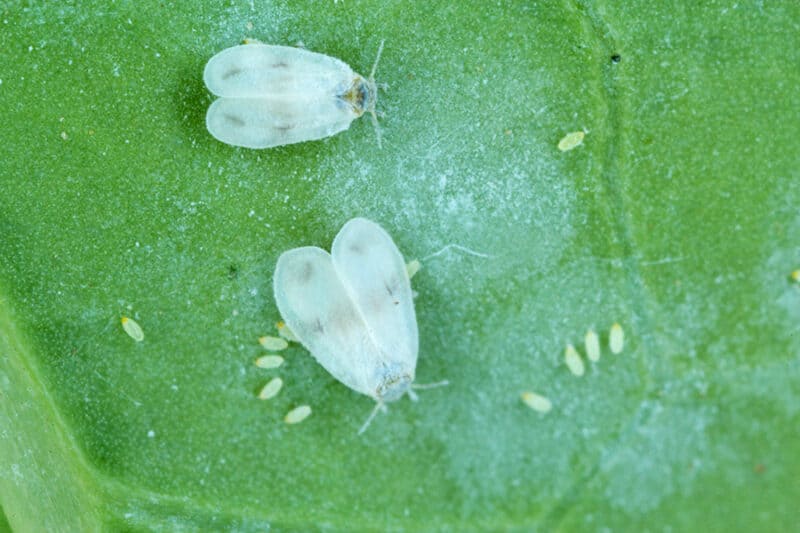
Despite the name, whiteflies aren’t really flies; they’re closely related to mealybugs and aphids. They’re white in appearance and small, measuring only 1/10 inches long. Whiteflies kind of look like tiny white moths.
They suck the juices out of your plants, causing the leaves to turn yellow and fall off the plant.
We have an entire guide to help you deal with whiteflies in the garden, but you can use many of the same strategies indoors. Just be sure that if you use insecticides or other sprays that they are approved for indoor use.

